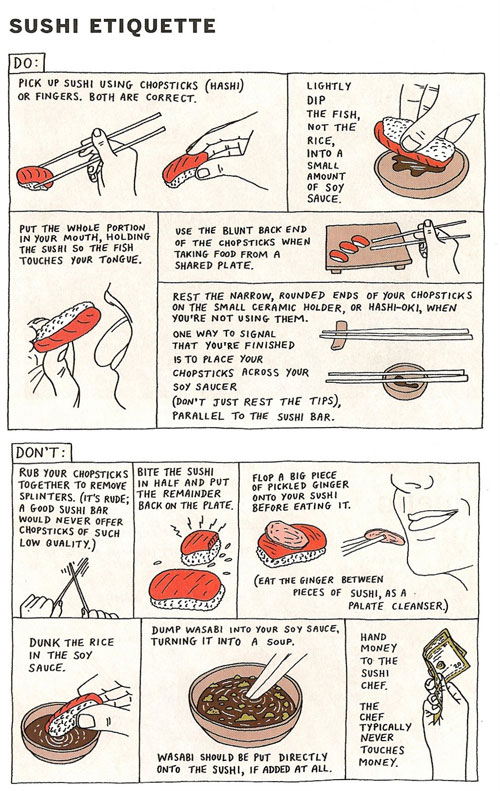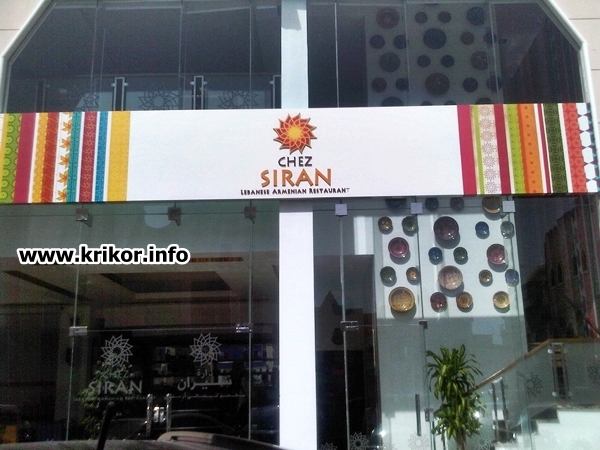May 2011 | THE F-FACTOR, which is all about how friends, fans & followers greatly influence consumers’ purchasing decisions in ever-more sophisticated ways.


So much has been said about social media and the rise of social commerce as the new marketing frontier that we’re not going to (re)make the social case here. Instead, we’ll focus on how the influence of friends, fans, and followers on consumers’ purchasing decisions continues to become more sophisticated and thus more powerful. Let’s call it the F-FACTOR:
THE F-FACTOR | Consumers are increasingly tapping into their networks of friends, fans, and followers to discover, discuss and purchase goods and services, in ever-more sophisticated ways. As a result, it's never been more important for brands to make sure they too have the F-FACTOR.
Why is the F-FACTOR important to consumers? It offers the promise of a consumption arena* that is more efficient, more relevant, and more interesting than before, where consumers either had to spend endless time and effort on trying to discover the best of the best, or had to rely on sources that were distant, unknown or untrusted (read: brand-driven), and therefore potentially unreliable or irrelevant.
Of course, consumption has always been social: people have forever been influenced by what those around them think and buy. KellerFay, a US word of mouth marketing research consultancy, estimates that there are nearly one trillion conversations about brands every year in the US alone.
But, just as with so many consumer trends, while the core consumer behavior isn’t new, technological developments are unlocking new manifestations of that behavior, which here amplify its importance and impact. Indeed, the F-FACTOR is being fueled by new tools and platforms available to both consumers and brands, and by the sheer numbers of people now using and contributing to these tools.
Note: This Trend Briefing focuses on the new ways consumers’ purchasing decisions are being influenced by their friends, followers and other people they “know”. For more on consumers who actually contribute, see our 11 Crucial Consumer Trends for 2011, where we looked briefly at the rise of SOCIAL-LITES, and the phenomenon of why consumers are increasingly becoming curators; actively broadcasting, remixing, compiling, commenting, sharing and recommending their purchases and experiences to both their friends and wider audiences. Hint: it’s it all to do with the changing STATUSPHERE, as always ;-)

(Picture credit: 55His.com)
Just a few recent stats demonstrating the reach and power of the F-FACTOR:
- The F-FACTOR is currently dominated by Facebook, as over 500 million active users spend over 700 billion minutes a month on the site. (Source: Facebook, April 2011)
- And its impact isn’t just on Facebook itself. Every month, more than 250 million people engage with Facebook across more than 2.5 million external websites. (Source: Facebook, April 2011)
- The average user clicks the ‘Like’ button 9 times each month. (Facebook, 2010)
And a couple of brand-related, F-FACTOR stats:
- Three quarters of Facebook users have 'Liked' a brand. (Source: AdAge/ Ipsos, February 2011)
- Juicy Couture found that their product purchase conversion rate increased by 160% after installing social sharing features (Source: CreateTheGroup, February 2011)
- Incipio Technologies, a gadget accessory retailer, found that referrals from Facebook had a conversion rate double the average (Source: Business Insider, March 2011)
- But it’s not just about Facebook. Take for example the explosive rise of the daily deal site Groupon, which used referrals from friends and colleagues to drive sales of over 40 million deals in the two and a half years since it launched in November 2008, via email ;-)

So, here are just five of the ways that the F-FACTOR influences consumption behavior:
- F-DISCOVERY: How consumers discover new products and services by relying on their social networks.
- F-RATED: How consumers will increasingly (and automatically) receive targeted ratings, recommendations and reviews from their social networks.
- F-FEEDBACK: How consumers can ask their friends and followers to improve and validate their buying decisions.
- F-TOGETHER: How shopping is becoming increasingly social, even when consumers and their peers are not physically together.
- F-ME: How consumers’ social networks are literally turned into products and services.
* This Trend Briefing is about the impact of consumers’ social connections on how they find, decide and purchase: i.e. what happens when consumption is increasingly social, rather than the personalized retailing opportunities on social networks (which is currently still the main focus of F-COMMERCE). For more on this see the excellent Social Commerce Today.
One final caveat: there are a whole host of ways in which consumers are influenced by other consumers, from collaborative filtering and ‘social’ or collective intelligence models. But to try and save this from turning into a book, this briefing will focus on consumers’ existing or explicit social networks.


Consumers’ ongoing obsession with owning or experiencing the best of the best and their desire for serendipity, excitement, interaction and community, explains the pull of F-DISCOVERY. People are curious and interested in what their friends and contacts think, do, eat, read, listen to, drive in, travel to and buy, because often this will be similar to how they want to think, act and buy.
No surprise then that consumers are embracing communities, tools and apps that allow them to dive into and discover selections from friends, fans, followers and so on. Just a few examples:

- Polyvore bills itself as ‘a community of tastemakers’, where users can clip products from around the web and compile them into virtual ‘looks’ or sets which can be shared across social networks. The site also features sets from brands and celebrities, with users able to follow, like and buy desired items.
- Boutiques.com is a personalized shopping site from Google where users can establish their own collection of favorite items from around the web.
- Users of Thefind, the shopping search engine, can ‘Shop Like Friends’, and view their Facebook friends’ tastes and preferences.
- A number of extensions make it increasingly easy for consumers to see exactly what their friends 'Like' around the web: check out Likebutton.com, which shows users what their friends have liked across a number of the most popular sites, or LikeJournal, which stores users' and their friends' likes.
- Belgian magazine Flair launched their fashiontag Facebook app in March 2011. The app enables users to tag photos of friends’ clothes and ask them where they had bought them. Within a week, the magazine’s number of fans increased by 35%, from 17,000 to 23,000. (via AdAge)
- Kaboodle, Svpply, Fancy and Nuji all help users to discover new products from apparel to art that have been selected by fellow consumers.
- Canadian shoppers can use ItSpot’s iPhone apps to discover what fellow shoppers nearby are buying. The apps cover a number of cities, and include details of local promotions as well as shopping tips from local Shoppingistas.

- In November 2010, Gifts.com and Hunch joined forces to create their GiftFinder app, which logs into Facebook and suggests suitable gifts for friends based on the information in their profile pages. The company said the conversion rate was up to 60% higher than when users were shown generic recommendations.


While consumers sometimes enjoy finding the best of the best through discovery, they are increasingly able to access personalized recommendations and reviews on something they know they want to purchase. In fact, expect more and more sites to automatically serve up friends’ recommendations, ratings and reviews* next to goods and services that people are researching.

- In April 2010, Levi's was the first big brand to integrate its online store with Facebook, allowing shoppers to view which products their friends had ‘liked’, interact with them and create a 'like minded shopping' experience.

- Facebook’s Instant Personalization project moves this beyond Facebook itself, by enabling users to have content that their friends have liked or recommended highlighted on other websites. Partner sites include local review site Yelp, music site Pandora, Microsoft’s search engine Bing and travel site Trip Advisor. The Trip Advisor tie in, launched in December 2010, means that visitors to the travel site who are logged into Facebook see their friends’ reviews first, as well as being able to quickly view which of their friends have been to particular cites. Friends can also message each other quickly for additional travel tips.
- Amazon launched a feature in July 2010 that allows users to integrate their Facebook and Amazon accounts. The feature allows Amazon to connect through to a user's social network and base recommendations upon the information found in his/her Facebook profile. Moreover, the feature also informs users of friends' most popular books, DVDs and musicians and also reminds them of birthdays and gift suggestions.

- In February 2011, Microsoft’s Bing rolled out their "Liked Results" feature to all users. The update brings Facebook 'likes' and search preferences of friends into the search engine's algorithm.

- Similarly, Google’s +1 feature, launched in March 2011, brings personalization to search results, by allowing users to ‘+1’ results. These are then shared with an individual’s Google contacts, and highlighted in their search results. Google’s stated aim for the project: enabling users to help each other out in choosing the best and most relevant results.
* Privacy concerns are of course the elephant in the room here. Ensuring that consumers maintain control and choice over when and where their information ends up is one of the big challenges for brands. But that’s for another briefing. In the meantime, check out the Wall Street Journal’s excellent (if scary) What They Know feature.


Over the last decade, online reviews have greatly empowered consumers (see TRANSPARENCY TRIUMPH). But anonymous reviews aren’t always what consumers need or want; they can lack relevance and context, and consumers with many options sometimes just want an unambiguous, or finite opinion.
Which is where F-FEEDBACK comes in: consumers actively disclosing their purchasing intentions and reaching out to their friends and contacts for personalized feedback.
Some indicators:
- Product recommendations from family (63%) and friends (31%) are the most trusted. However 81% of US consumers now go online to do additional research, with 55% looking for user reviews, and 10% soliciting advice from their social networks. However amongst people aged 25-34, this figure rises to 23%. (Source: Cone Inc, June 2010)
- 90% of people trust the recommendations of their Facebook friends (Source: ExactTarget, August 2010)
- 31% of daily Twitter users ask their followers for opinions about products and services. (Source: Edison Research & Arbitron Internet, April 2010)
One more key driver here: with more and more consumers increasingly viewing their online reputation as something to enhance as well as just protect, the quality of answers on Q&A services is rapidly improving. Some examples:

- Facebook Questions was recently redesigned to focus on helping people ask their friends (rather than the whole Facebook community).
- Sites such as StackExchange and Quora allow users to follow topics and other users, building detailed databases of questions and answers that are tagged and publicly searchable.
- LoveThis is a user review website for people to write tips and recommendations to share among friends on their network.
- Travel Q&A sites Gogobot and Hotel Me are trying to bridge the gap between known friends (who are trusted but may not have the answer) and wider audiences.
There are also a whole host of sites for consumers who want tips and recommendations about which products and services to purchase, rather than more general Q&A:

- Visa’s RightCliq is an online shopping tool that enables consumers to save potential purchases in their ‘Wishspace’, which can be shared with friends for feedback.
- Shopsocial.ly offers consumers a platform to connect with their friends and others who wish to share product recommendations or purchases. The website enables users to 'shout' out a question regarding a product in order to receive feedback from their community of trusted advisors.
- Online price comparison site Twenga launched a feature in April 2011 that allowed users to instantly pose questions to their social networks.
Due to the continued spread of smartphones, F-FEEDBACK can happen in real-time too:

- MyShopanion and Scandit are just two iPhone apps that allow consumers to scan items while out shopping and not only see online reviews but get instant feedback via Facebook and Twitter.

Check out these examples of how friends can now come into the fitting room ;-)
- The Tweet Mirror enables customers to send snaps of themselves to friends and followers directly from the fitting room.
- In Spain, Diesel hooked up cameras in their stores to Facebook, allowing customers to post photos of themselves trying on clothes to their profiles for instant feedback from their friends.
- From September to November 2010, Macy’s Magic Fitting Room enabled shoppers at the brand’s New York flagship store to virtually ‘try on’ items via an augmented reality ‘mirror’ and then post the results to Facebook.
- Go Try It On takes this concept one step further, by providing a platform for users to ask not just their friends for feedback, but the site’s community for their opinions on their outfits.

More and more online consumers are also sharing and discussing potential purchases with their friends in real-time:
- WetSeal, the US fashion retailer, has a ‘Shop With Friends’ feature, similar to toy retailer Mattel’s ShopTogether
- Shop With Your Friends, a Dutch startup has developed a tool that enables consumers to shop online together in real-time.
- Quorus Discuss is a plugin that any online vendor can install that allows users to chat and discuss products with friends.
- In November 2010, Cisco encouraged consumers to use their WebEx tool to share their desktops with friends on Cyber Monday, the post-Thanksgiving day when many US retailers launch online promotions.


While group-buying platforms such as Groupon are revolutionizing local retail (see our PRICING PANDEMONIUM trend), consumers usually don’t actually know the other members of the group that they’re buying with. So, while consumers get to leverage the power of the web to benefit from better deals, the actual shopping experience frequently lacks the F-FACTOR. Consumers, of course, have strong incentives to share certain purchases, especially for F-FACTOR-friendly experiences such as buying event tickets: what’s not to like about automatically inviting friends to a concert or movie right after purchasing a ticket?
- 83% of consumers state that they tell their friends if they get a good deal. (Source: JWT Intelligence, December 2010)
- Facebook announced in April 2011 that every time a user posts on Facebook about buying a ticket from Ticketmaster, the company estimates they receive an extra USD 5.30. (Source: New York Times, April 2011)
- Eventbrite, the event ticketing site, found that users are 10 times more likely to share details of events they have bought tickets to (than those events they are still considering whether to buy). The ticket sales generated by people who share details of purchased events are 20% higher than if they haven’t yet bought tickets. The site estimates that the value of a Facebook share is USD 2.53. (Source: Eventbrite, March 2011)

So, expect to see more tools that help consumers easily share and co-ordinate relevant purchases with their close friends and family, but for now we’ll just highlight a few:
- Disney’s Tickets Together Facebook app enables users to buy theater tickets directly from Facebook, posts details of the screening on a user’s wall and enables them to invite friends to buy tickets.
- Indian consumers can do something similar with ticket site BookMyShow’s Ticket Buddy Facebook app.
- Ebay’s Group Gifts feature, launched in November 2010, allows users to invite friends to split the cost of a gift. The application integrates with Facebook to allow friends to be privately invited, while information from the recipient’s profile can even be used to suggest suitable gifts.
- In April 2011, Facebookpiloted ‘Deals in Facebook’ in various US cities including Atlanta and San Francisco. Facebook users in these cities can find local deals and then easily share, buy and plan them with friends. Users are alerted to deals through email, Facebook notifications and, if their friends buy the deal, through their News Feed. Also, when users see deals from a business that their friends frequent (i.e. check-in at), this information will be also be included in the deal.



The F-FACTOR also makes possible personalized products and services based on the activities and output of one’s social network:
- Flipboard is an app that integrates tweets and updates into a single, personalized online magazine. Launched in July 2010, the free app automatically creates a magazine from the user's social content, letting readers quickly flip through the latest stories, photos and updates from friends and trusted sources. Links and images are rendered right in the digital magazine, so users no longer have to scan long lists of posts and click on link after link; instead, they instantly see all the stories, comments and images in one place.
- March 2011 saw the launch of LinkedIn Today, a socially curated news homepage for users that rounds up the stories and links that are being read, shared and discussed by a user’s network.
- Newsle is a tool that launched in public beta in April 2011 that alerts users to public news articles about members of their social networks from Facebook and LinkedIn.
- ‘Personal search engine’ Greplin launched publicly in February 2011. The search engine scans across a user's personal and social accounts including: Gmail, Facebook, Twitter and Google Docs, enabling users to locate any desired information that may be scattered across their social media network, whenever they want it.
- US based PostPost, launched in December 2010, is a free application that turns one's Facebook page into a digital newspaper. Users connect the application via the PostPost site, which enables it to link to Facebook and create a presentation of their news feed in the traditional format of a newspaper.

Oh, and check out these very ‘sign of the times’ F-ME examples of consumers literally turning their friends and followers into actual physical products and services:
- Twournal enables users of Twitter to transform their tweets and pictures into a real-life published journal. In addition to creating their own 'books', users can also buy and sell publications from other users.
- US based CrowdedInk offers an app that allows users to generate mugs filled with pictures of their Facebook friends or Twitter followers. Users only need to enter their username and a preview of the mug is automatically generated in minutes.
- Social Print Studio can provide the analogue equivalent to the online album. The site creates posters generated from Facebook friends’ profile pictures, Facebook photo albums, Twitter followers, and even Tumblr accounts.
- Kunst Buzz, a Dutch art company has started producing Twitter art where users’ tweets make up their portrait.


With the F-FACTOR a growing force in the consumption arena, ultimately the only way for brands to succeed is to be liked (literally ;-) if not loved, and this liking and loving comes from superior performance. In that sense, the Perform or Perish theme is stronger than ever, and underscores that while the F-FACTOR is currently playing out in the online arena first and foremost, this is in the end about business at large.
The F-FACTOR is about being so exceptional that consumers will find and ultimately choose you, without you as a brand having to do anything extra. It’s not about bribing or even compelling people to “Like” your Facebook page. This is something of course, which brands that truly have the F-FACTOR don’t have to worry about.
So, for all ‘F-entrepreneurs’, this space is still wide open: simply come up with new tools and platforms that help consumers help each other to discover, discuss and buy the best of the best. For B2C brands, it’s time to deliver innovations, products, campaigns and experiences that truly have the F-FACTOR.
Source: www.trendwatching.com. One of the world’s leading trend firms, trendwatching.com sends out its free, monthly Trend Briefings to more than 160,000 subscribers worldwide.
![]() When applying to a new job or position, having a nice resume is a must. It should reflect your business experience in reality, nevertheless these resumes contain some lies, some of them are acceptable white lies and some of them are huge and definitely bullshit information.
When applying to a new job or position, having a nice resume is a must. It should reflect your business experience in reality, nevertheless these resumes contain some lies, some of them are acceptable white lies and some of them are huge and definitely bullshit information.

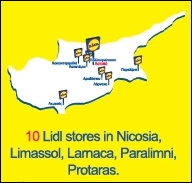 In October 2010,
In October 2010, 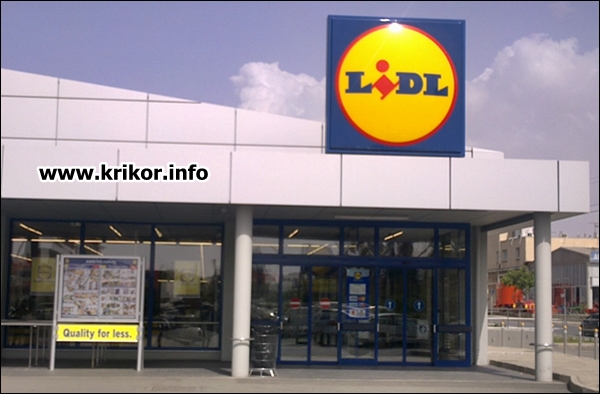
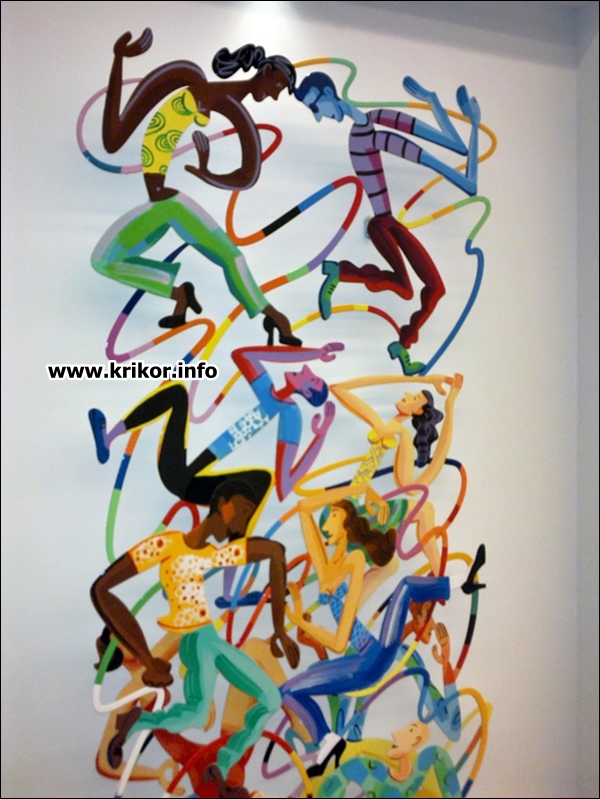
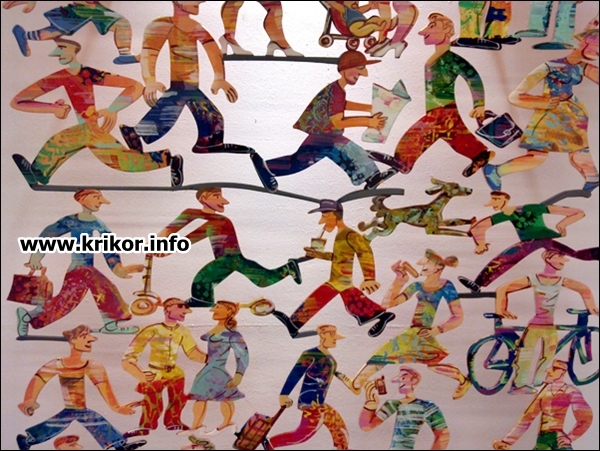

 No matter how many people you will ask around you to define the exact meaning or definition of the word “marketing”, you will always get more and more different views about it. Almost no 2 people can agree on the same marketing angle.
No matter how many people you will ask around you to define the exact meaning or definition of the word “marketing”, you will always get more and more different views about it. Almost no 2 people can agree on the same marketing angle.
 After the convention, it was time to have some fun in Vegas, I enjoyed every moment of my stay, spent few bucks literally in
After the convention, it was time to have some fun in Vegas, I enjoyed every moment of my stay, spent few bucks literally in 